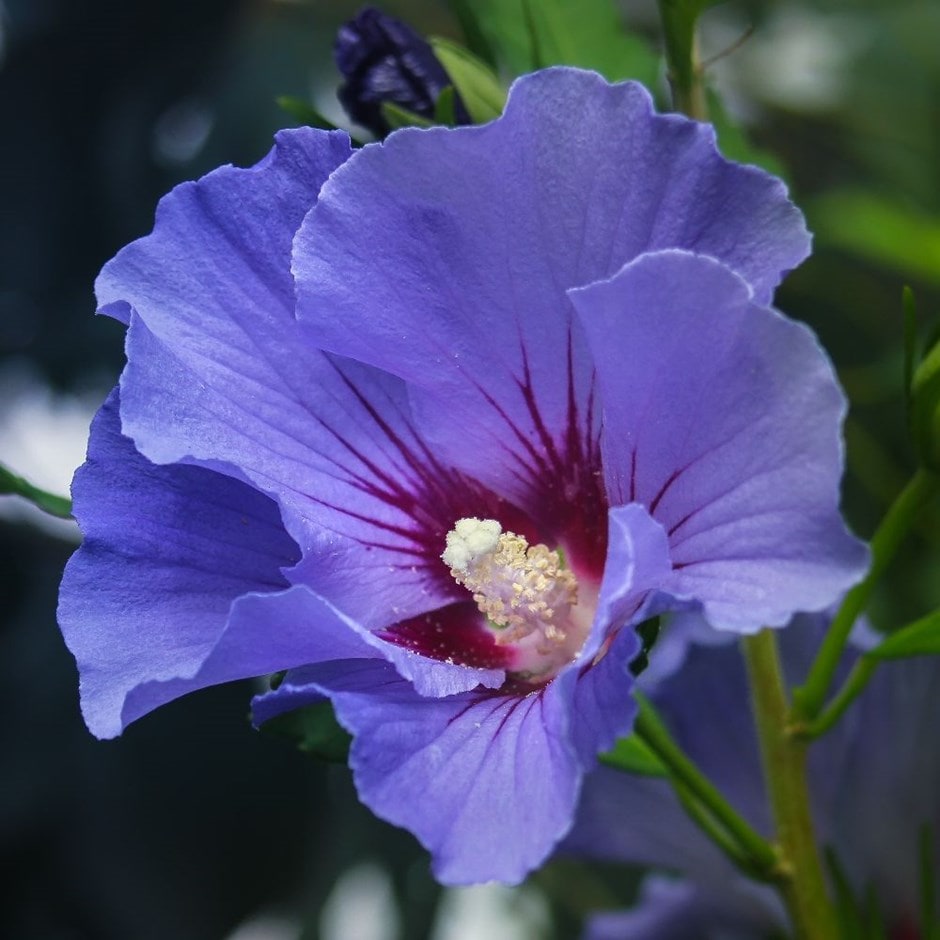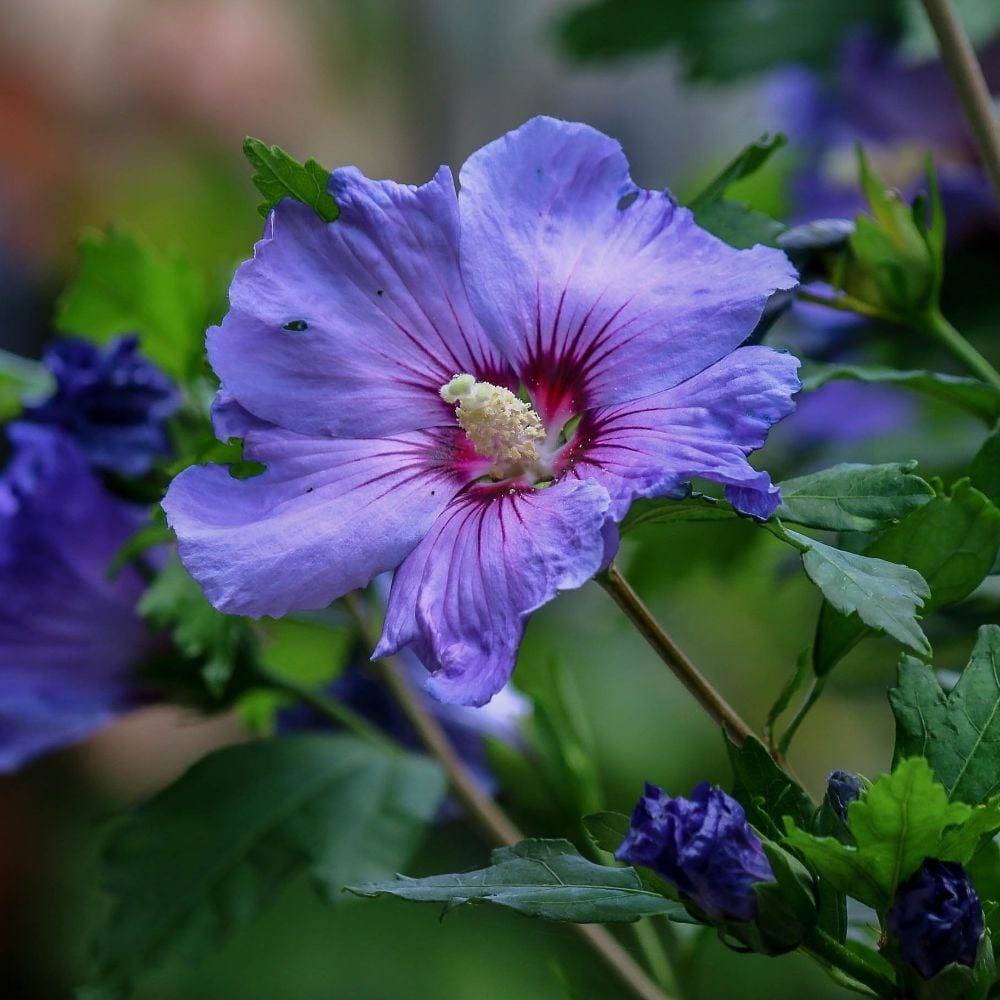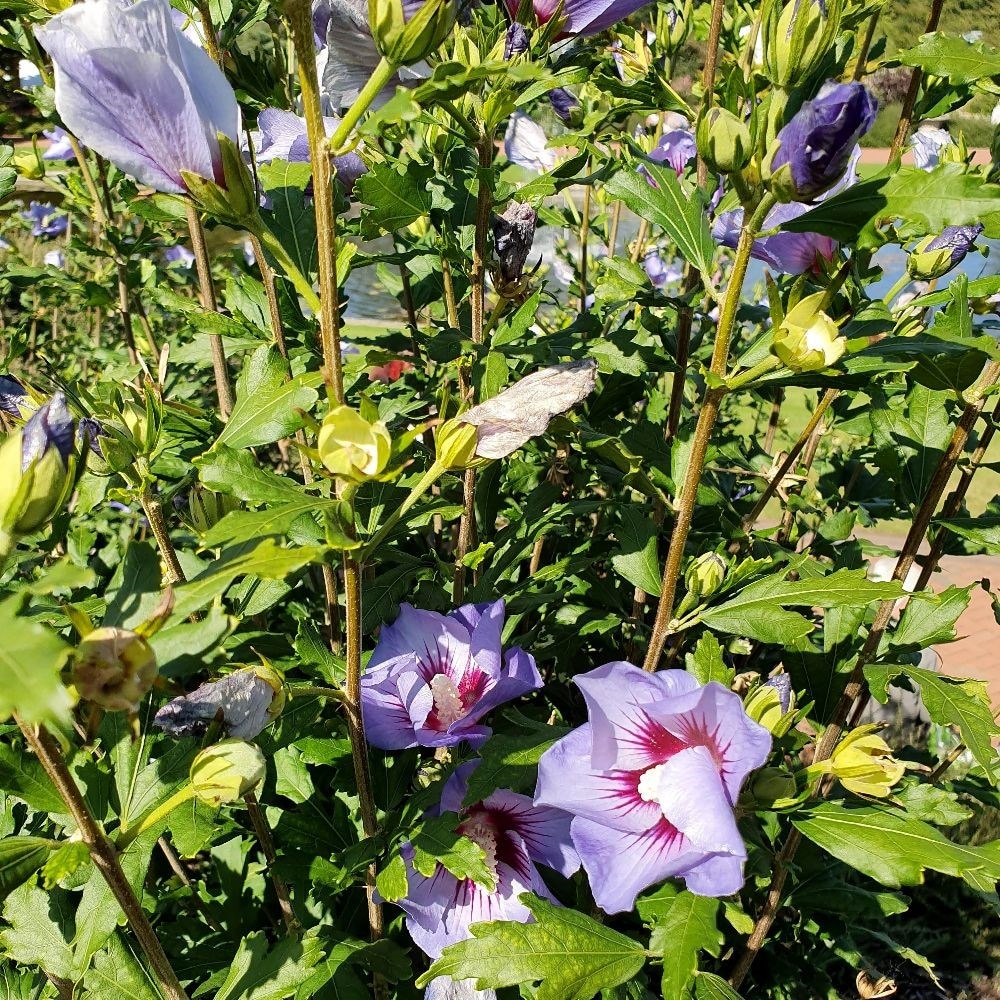Hibiscus syriacus 'Marina'
tree hollyhock
- 2 litre pot
- £29.99
- In stock (shipped within 2-3 working days)
Delivery options
- Standard £5.99
- Position: full sun
- Soil: humus-rich, moist but well-drained, neutral to slightly alkaline soil
- Rate of growth: average to fast
- Flowering period: August to October
- Hardiness: fully hardy
Hibiscus syriacus 'Marina', also known as the Blue Chiffon Rose of Sharon, is a stunning, late summer flowering deciduous with elegant blooms. This hardy hibiscus will add a tropical feel to your borders, and features large, lavender-blue to mauve flowers with ruffled petals and a darker blue centre, creating a striking contrast. Flowering occurs from late summer to early autumn, providing a beautiful splash of colour when many other plants have finished blooming.
Easy to grow and with a relatively upright habit, this hibiscus thrives in full sun and prefers well-drained soil. The 'Marina' is also hardy, low-maintenance, and can be used in mixed borders as an informal screen, hedge, or as a standout specimen in your garden.
Easy to grow and with a relatively upright habit, this hibiscus thrives in full sun and prefers well-drained soil. The 'Marina' is also hardy, low-maintenance, and can be used in mixed borders as an informal screen, hedge, or as a standout specimen in your garden.
Plant in a sheltered, sunny location with moist, fertile soil. While they can tolerate some dryness, consistent moisture will encourage lush growth and abundant blooms.
If growing them in large containers, protect the roots from harsh winter conditions by wrapping pots and plants using horticultural fleece or move to a sheltered spot such as a southerly facing wall.
Mulch the base of border plants with a dry material like bark chips to insulate the roots and prevent frost damage. Regularly remove spent blooms to prolong flowering.
Pruning should be done in late winter or early spring, before new growth emerges. Prune back to strong, healthy buds to encourage new growth and shape the plant. Removing old and damaged wood will also help to improve air circulation and reduce the risk of disease.
If growing them in large containers, protect the roots from harsh winter conditions by wrapping pots and plants using horticultural fleece or move to a sheltered spot such as a southerly facing wall.
Mulch the base of border plants with a dry material like bark chips to insulate the roots and prevent frost damage. Regularly remove spent blooms to prolong flowering.
Pruning should be done in late winter or early spring, before new growth emerges. Prune back to strong, healthy buds to encourage new growth and shape the plant. Removing old and damaged wood will also help to improve air circulation and reduce the risk of disease.


